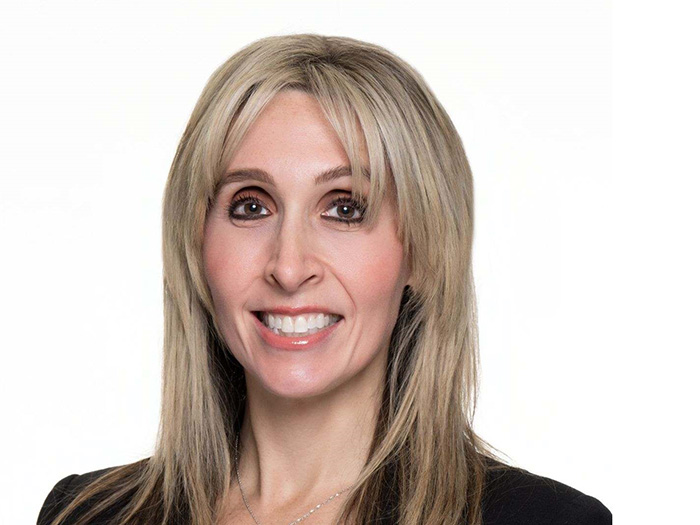6 Trends the State of Vermont Captive Space Is Eyeing

After three years full of cancelled events and virtual congregations, the Vermont Captive Insurance Association (VCIA) was able to host its annual conference, and first since the start of the pandemic, this from August 8-11.
Set in Burlington, the conference featured sessions and speakers on all things captives, from informative sessions for those new to the landscape to how captives can be utilized in specific sectors.
Perhaps one of the most highly anticipated sessions came on the conference’s final day. Ahead of his August 26 retirement, David Provost, deputy commissioner of Vermont’s Department of Financial Regulation Captive Insurance Division, took the stage to share his thoughts in the session, “Hot Topics with Dave Provost.”
Provost was joined by Jeff Tucker, senior account executive for Aon, moderator Mark Falloon, risk management manager at Bechtel Corporation, and Sandy Bigglestone, who is set to assume the role of deputy commissioner following Provost’s retirement.
The four identified and discussed the following six trends, their impact on the captive space and how captives can respond.
1) Labor Challenges
Every sector has felt the sting of labor challenges. The pandemic certainly exacerbated these challenges, with The Great Resignation sweeping across the insurance industry. The State of Vermont is not immune to these challenges as well, with Tucker stating, “In Vermont, we’re seeing turnover just like everywhere else in the country and in the world.”
Tucker also said that while this trend is ongoing, thus making it difficult to craft a solution, businesses must prioritize maintaining their current staff numbers and increasing it, if possible.
“As leaders, we must be willing to engage with our colleagues, empower them, give them opportunities … We want to retain the best talent that we can.”
Bigglestone shared that labor challenges can create hurdles for Vermont, as its captive business has proven its importance to the state’s overall success. Looking ahead, she said that she hopes the captive insurance industry “can come together to look into the future and make the industry sustainable in terms of jobs.”
Bigglestone also suggested that hosting and promoting career fairs specific to the captive space could, as she put it, “spread the word,” about the industry, its benefits, and the growth opportunities within it.
2) Responding to the Hard Market
The discussion of the current hard market is nothing new or groundbreaking to insurance industry professionals. How has the hard market affected captive operations in Vermont?
Provost shared stories of how insureds who hold their captives through Vermont’s domicile that have been struggling to secure non-captive coverage because of the market’s current limitations. This has led currently operating captives to expand their risk retention capabilities, according to Provost.
From a captive management perspective, Tucker has observed that companies who had not formed a captive prior to the hard market are now inquiring about doing so. But, when the market hardens, the timeline to form a captive extends. Those companies who had not formed a captive previously are now wishing they had.
“The best captives are those formed in the soft market, because they know what’s coming,” Provost said.
3) ESG Initiatives
Perhaps one of the most talked about trends throughout the last two years, ESG initiatives have taken the industry by storm, with most businesses and companies placing them high on their priority lists.
The same goes for insurers as well, as carriers can become particular about who they insure based on what possible insureds stand for. Falloon mentioned the example of an insurer choosing to not provide coverage to a potential client because of the effects its operations have on the environment.
When describing the impact of climate change has had on captives, he used the word, “pervasive.”
“It affects everything, from investments to all lines of business,” he said.
The State of Vermont also has captives within places that are victim to severe climate change events, with Provost mentioning that several captives that Vermont has formed are placed in California, created specifically to insure against wildfire risk.
Questions on how insureds are addressing and preparing for climate change events have become the norm and have become a critical point of discussion for Vermont when looking to administer a captive to an insured, according to Provost.
He said, “Whether it’s a small company or a Fortune 500 company, we want to make sure their boards are asking questions about climate change and how it’s affecting their company.”
For captive owners looking to respond to the trend of ESG, Tucker said, “Make sure the captive is involved in the conversation around your ESG policy with your parent company, whatever that framework is.”
4) Cyber Security
Cyber risk and security have been on the minds of every organization and business throughout the globe. As the pandemic created a hybrid, remote workforce, the potential of a cyberattack intensified. More specifically, ransomware events have taken centerstage, successfully infiltrating several large entities and causing disruptions felt by the masses.
With premiums and rates increasing, Tucker said that captives can be utilized to retain cyber risk in its traditional methods. Additionally, Tucker noted that the number of captives writing cyber risk has drastically increased.
“Sometimes, companies don’t fully understand what their exposure truly is,” he said. “[It’s important for] companies to grasp what their risks are, what can they retain, and what they can buy in the markets.”
Provost agreed with Tucker’s observations and said that Vermont is also seeing captive owners increasing and decreasing their cyber coverages throughout the year, depending on the behavior of the market.
Looking forward, Tucker noted that many more captives this year are including cyber coverage in their renewal discussions compared to those captives seeking renewal last year.
5) Employee Benefits
With The Great Resignation continuing to worry the industry, it has become imperative for employers to not only attract up and coming talent, but to retain it as well. An effective strategy employers can utilize is expanding their employee benefits arsenal.
How do employee benefits and the captive space blend? Tucker said that the number of captives that were had received exemption by the Department of Labor to include employee benefits was around 30, making these resources within captives in the United States low.
Despite the numbers being small, the conversation surrounding the inclusion of employee benefits in a captive has ramped up. There are several reasons why the addition of an employee benefits package would be beneficial to a parent company, which is why these discussions are taking place.
Vermont is experiencing a similar wave.
“We’ve seen great success with employee benefits and minimal stop losses, which has become more popular recently,” Provost said. “But it really does have to be priced right.”
6) Parametrics and Other Disruptors
Being the final trend discussed, the speakers discussed how the use of parametrics in the industry has resulted in the search for more coverage for those types of tools.
The State of Vermont is not currently monitoring how many of its captives utilize parametrics, but Provost mentioned that the discussion between captive owner and insurer has been robust, with questions regarding the coverage of parametrics being asked frequently.
While captive owners can run into difficulty finding coverage specific to parametric tools, Provost noted that if the appropriate insurance elements, such as insurable risk and proof of loss are recorded, an insurance contract can be contrasted with respect to parametrics.
“To us, it’s like any other plan change,” he said. &












